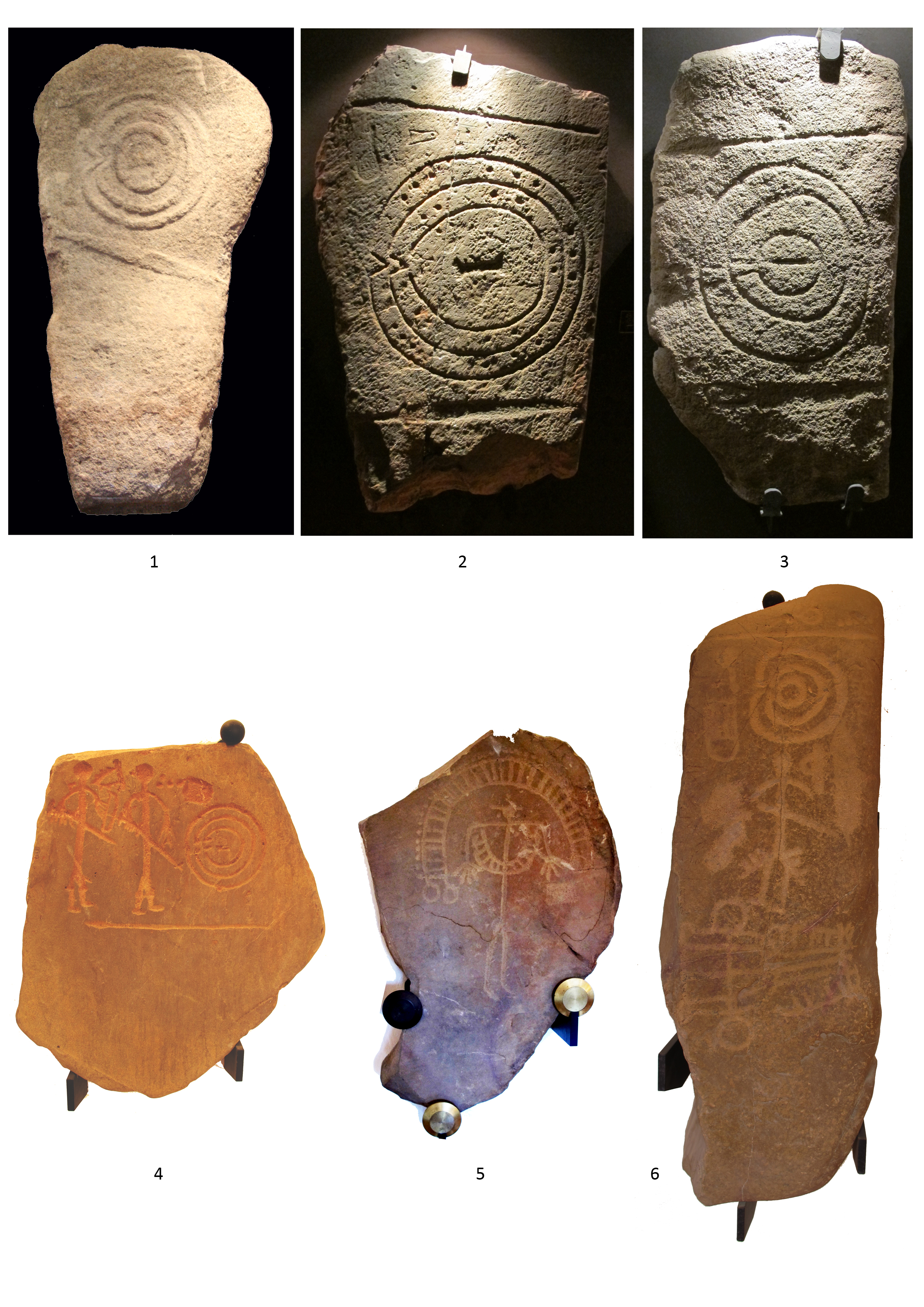International Cooperation-Project 2021-2023 (english version)
The Iberian stelae of the Final Bronze Age:
iconography, technology and the transfer of knowledge between the Atlantic and the Mediterranean
In Cooperation with University of Coimbra (Portugal), Consejo Superior de Investigaciones Científicas (CSIC, Spain) and the Institut für Angewandte Geowissenschaften at the Technical University of Darmstadt
Project director: Dr. Ralph Araque Gonzalez
Funded by the Deutsche Forschungsgemeinschaft (DFG-Project-Nr. AR 1305/2-1)
Duration: January 2021- December 2023
Project description (german version, portugese version, spanish version)
The archaeological record of Late Bronze Age Iberia (c. 1300-800 BC) is fragmentary in many areas: sparse remains of settlement and nearly no detectable burials are complemented by traces of metal hoarding and remains of mining activities. Taking this into account, the western Iberian stelae with their depictions of anthropomorphic figures, animals and selected objects are of unique importance for the investigation of this era. These monuments do not only show pictorial representations of artefacts otherwise unknown in the archaeological record, but they also represent spiritual and ideological concepts, the cognitive abilities of the artists, as well as the technical possibilities of stone-working.
According to recent research, this cultural phenomenon had its origins in the Beira Interior in Portugal and in the neighbouring Alta Extremadura, where statue-menhirs and stelae had a longstanding tradition from the Chalcolithic onwards. A regional in-depth study of this area, comprised of the diachronic and synchronic evaluation of rock art, landscape archaeology, materials analysis and excavation, shall therefore be conducted. The region functioned as a pivotal node between the Atlantic shores and the Mediterranean South of Iberia. The stelae were soon widespread in Extremadura and Andalusia, while they show obvious references to Mediterranean motifs. For this reason, the stelae will also be investigated in their cross-regional context as characteristic manifestations of the Iberian networks.
Almost 50% of all stelae have been carved into hard rock such as granite or quartzite. The carving of such materials with prehistoric technologies remains unexplained and unexplored. It is however essential to understand how the stelae were actually made to be able to interpret why the respective symbols were carved into hard rock. In a pioneering approach, the stelae will be studied as multifaceted image media by considering the depictions together with the materials used to screen the symbolic information and their positioning in the landscape as an inseparable cognitive unit.
The main objective of this project is a comprehensive and systematic investigation of the stelae to provide insights into their symbolic and societal significance as well as information on the artists, their social roles, skills, technology transfer and the network of intercultural communications between the Atlantic and the Mediterranean that provided them with a flow of ideas and knowledge. These objectives will be achieved through multidisciplinary cooperation of the research group and an approach that encompasses digital recording, geoscience, petrology, materials science, experimental archaeology, landscape and network analysis, visual culture studies, cognitive and social archaeology.
Project team:
- Dr. Ralph Araque Gonzalez
- Pedro Baptista M.A. (Wissenschaftlicher Mitarbeiter)
Cooperation partners:
- Prof. Dr. Raquel Vilaça (University of Coimbra)
- Dr. Marcos Osório (Sabugal)
- Dr. Lara Bacelar Alves (University of Coimbra)
- Dr. Carlo Bottaini (Évora)
- Dr. Xose-Lois Armada (CSIC Santiago)
- Dr. Sebastian Celestino (CSIC Merida)
- Dr. Pablo Paniego Díaz (CSIC Merida)
- Dr. Enrique Merino Martínez (Complutense Universidad Madrid)
- Dr. Marta Díaz-Guardamino (University of Durham)
- Prof. Dr. Rafael Ferreiro Mählmann (TU Darmstadt)
- Dr. Dirk Scheuvens (TU Darmstadt)
- Dr. Bastian Asmus (Experimental Archaeometallurgy)
- Dr. Michael Kaiser (Lithic tools, replications and analyses)
- Jan Schnorrenberg (Stonemason)

Stelae made of rock: 1. Baraçal, granite; 2. Brozas, gabbro; 3. Robledillo, granite; 4. Capilla 8, quartzite; 5. Capilla 1, quartzite; 6. Zarza Capilla 1 (1: courtesy of R. Vilaça; 2-6: photographs R. Araque).


